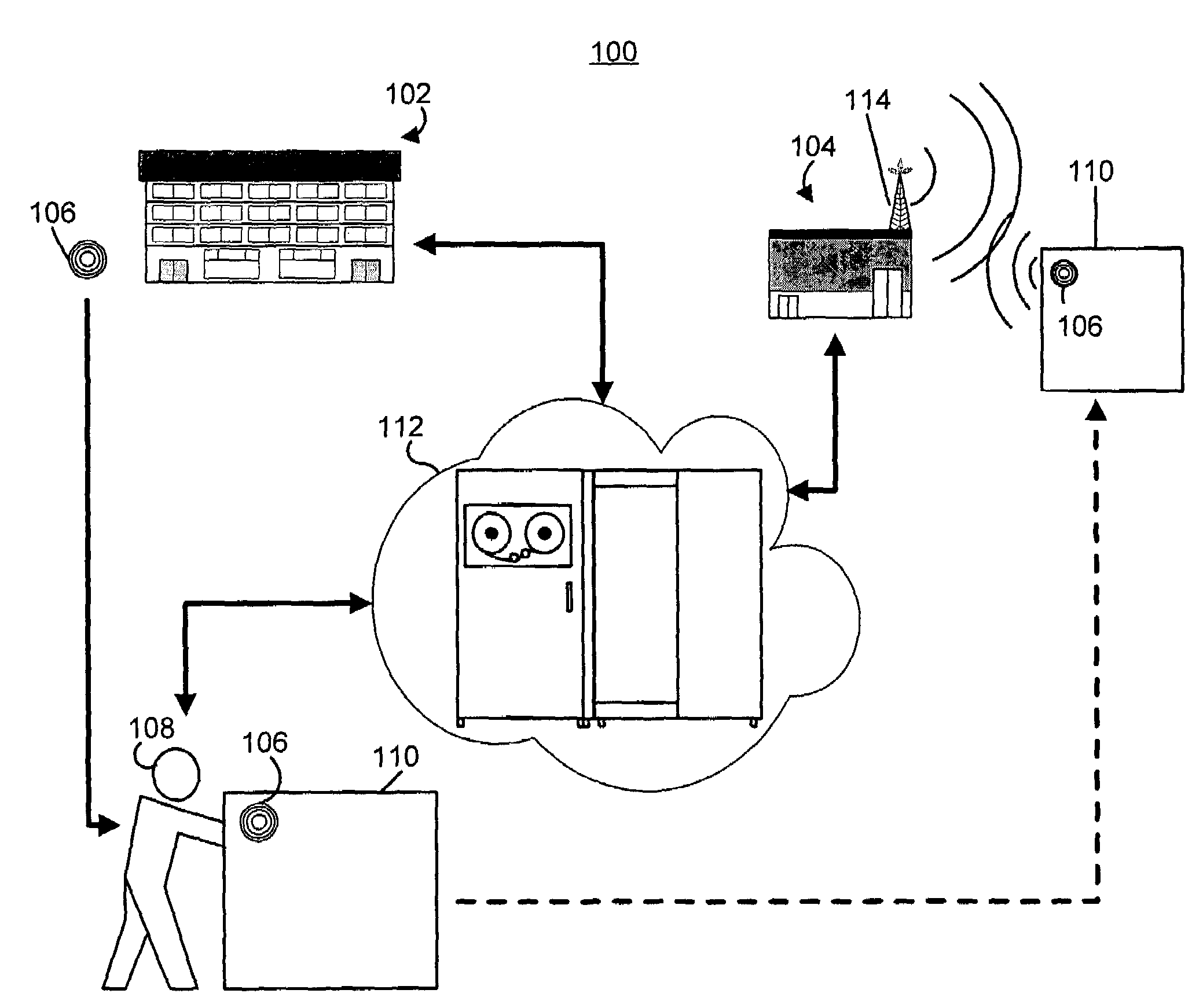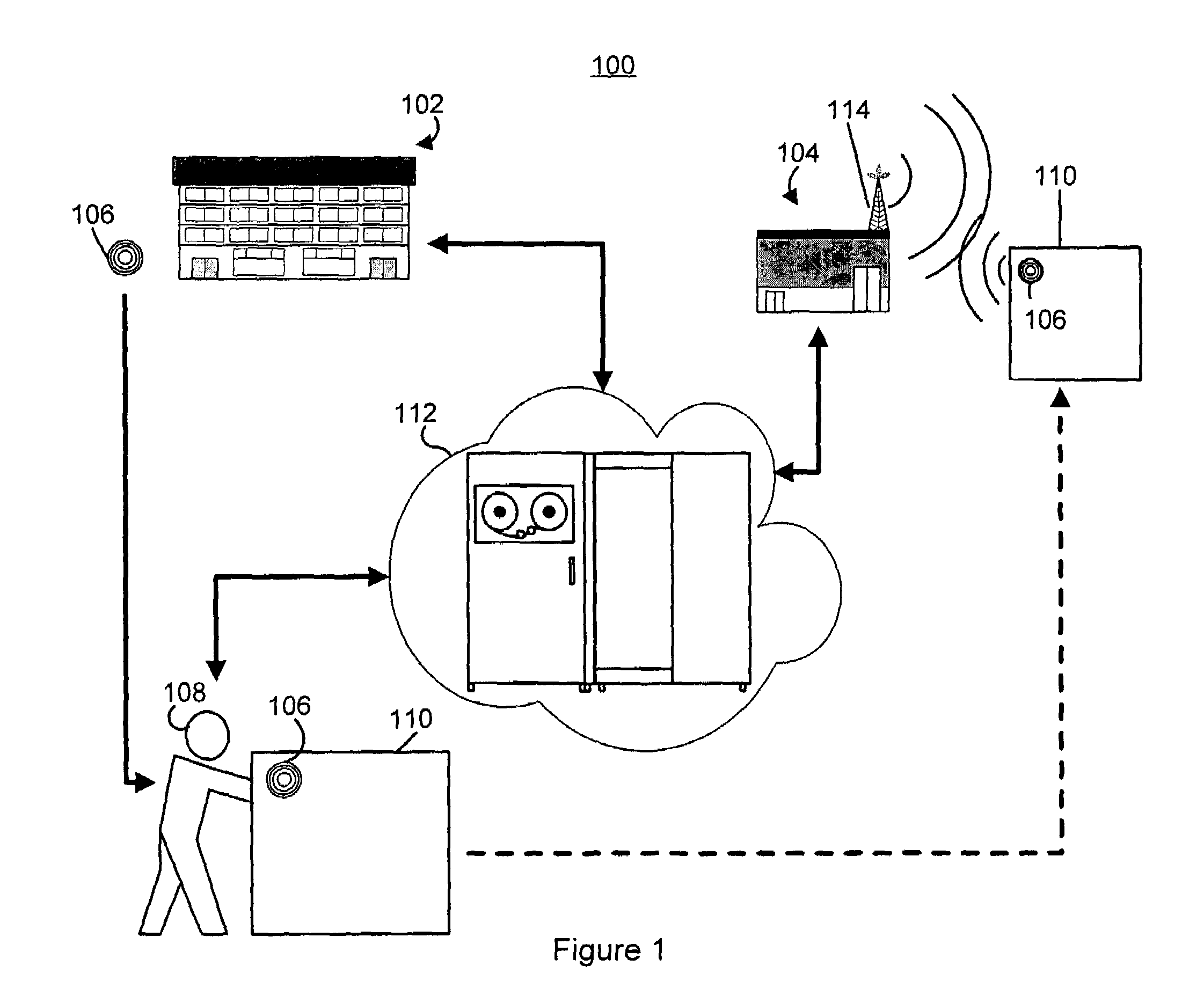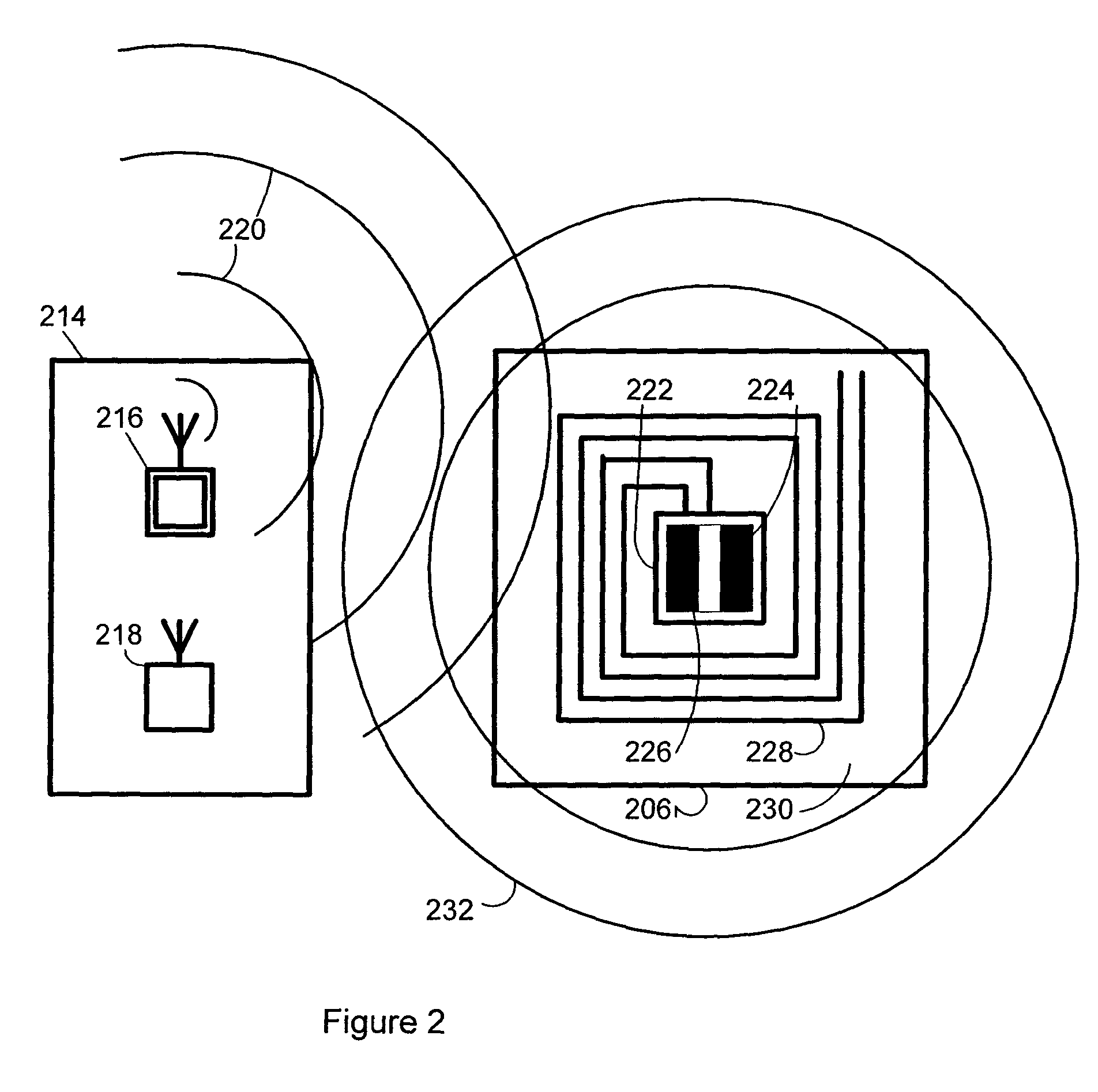Manufactured article recovery system
a technology for recovering systems and manufactured items, applied in the direction of burglar alarm mechanical actuation, instruments, electric signalling details, etc., can solve the problems of little use of technology to improve the recovery of stolen or lost manufactured items, insurers and law enforcement agencies incur costs associated with inability, and enforcement agencies that reclaim stolen items often have little means for verifying or identifying the owner of reclaimed items. , to achieve the effect of easy identification
- Summary
- Abstract
- Description
- Claims
- Application Information
AI Technical Summary
Benefits of technology
Problems solved by technology
Method used
Image
Examples
Embodiment Construction
[0027]To give a fuller understanding of the full scope of the present invention, this section describes the manufactured article recovery methodology and embodiments for a system for recovery of a manufactured article in accordance with the present invention. This section describes examples of the preferred embodiments of the invention and exemplary physical hardware and data structures to implement and embody preferred aspects of the invention.
[0028]FIG. 1 illustrates an environment for a manufactured article recovery system 100. The manufactured article recovery system 100 may be employed for identifying an owner of a manufactured article. The manufactured article recovery system may also be employed for identifying a mislaid or misappropriated manufactured article. The manufactured article may be a consumer item, an item of personal property, an item of business equipment, an item of inventory for a business, or the like.
[0029]The manufactured article recovery system 100 may incl...
PUM
 Login to View More
Login to View More Abstract
Description
Claims
Application Information
 Login to View More
Login to View More - R&D
- Intellectual Property
- Life Sciences
- Materials
- Tech Scout
- Unparalleled Data Quality
- Higher Quality Content
- 60% Fewer Hallucinations
Browse by: Latest US Patents, China's latest patents, Technical Efficacy Thesaurus, Application Domain, Technology Topic, Popular Technical Reports.
© 2025 PatSnap. All rights reserved.Legal|Privacy policy|Modern Slavery Act Transparency Statement|Sitemap|About US| Contact US: help@patsnap.com



